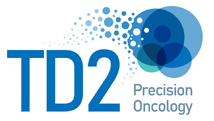Water Quality Tested By Flow Cyometry

The quality of water has serious effects on humans. We don’t go out into the forest and drink from steams for fear of bacteria from a host of sources. Drinking bad water can make someone violently ill; we boil it, filter it, treat it with ozone, and subject it to UV radiation to make it potable. Bacteria can feed and proliferate when water sources contain organic carbon concentrations as low as 10µg/L . Most people think flow cytometry is only used for immunophenotyping of lymphocyte subsets or receptor occupancy assays. However, Farhat et al. recently used flow cytometry to analyze the growth potential of the different microbial communities, showing that the most growth occurs in microbial communities indigenous to the water sample.
Here at Flow Contract Site Laboratory, as a contract flow lab, we test water samples using the BD Cell Viability Kit, with Jarro-Dophilus (a common Probiotic) as our positive control and purified water as our negative control. Using flow cytometry, the samples including controls are pre-warmed before Propidium Iodide and Thiazole Orange are added. After incubation, counting beads are added and then acquired on the flow cytometer. We can then calculate the bacteria/mL in each of our specimens to determine live and dead bacteria counts for our client samples. For more information on this assay or our flow cytometry services please contact us.
Farhat, Nadia, et al. “A Uniform Bacterial Growth Potential Assay for Different Water Types.” Water Research, vol. 142, 1 Oct. 2018, pp. 227–235. Epub ahead of print. doi:10.1016/j.watres.2018.06.010.

